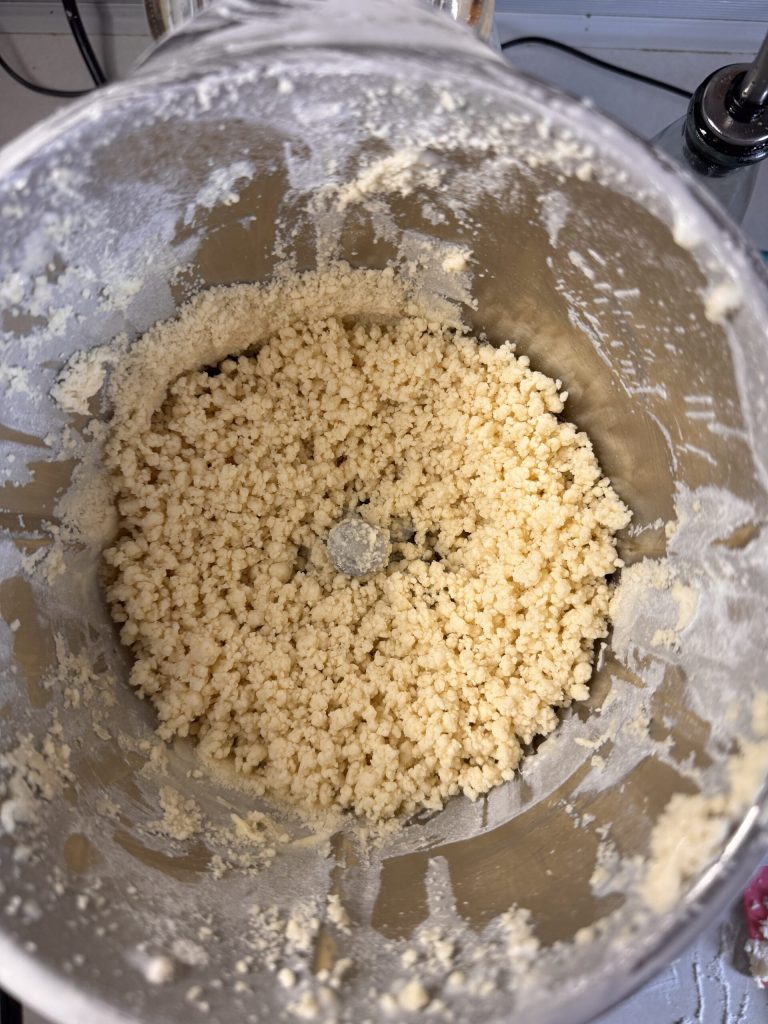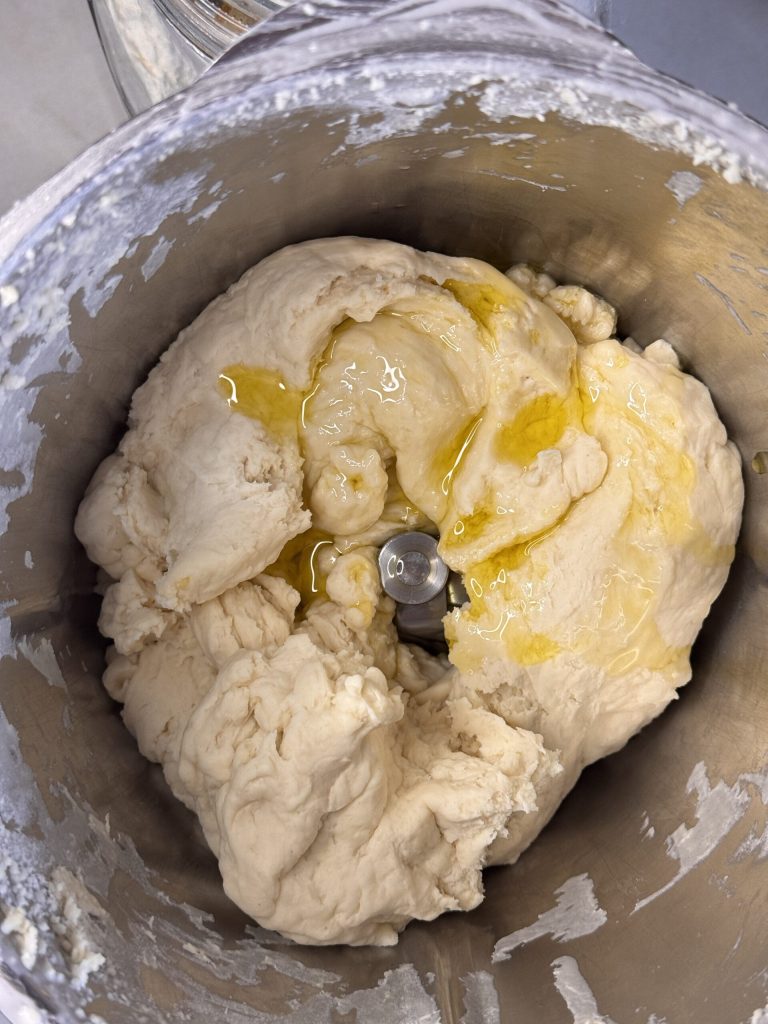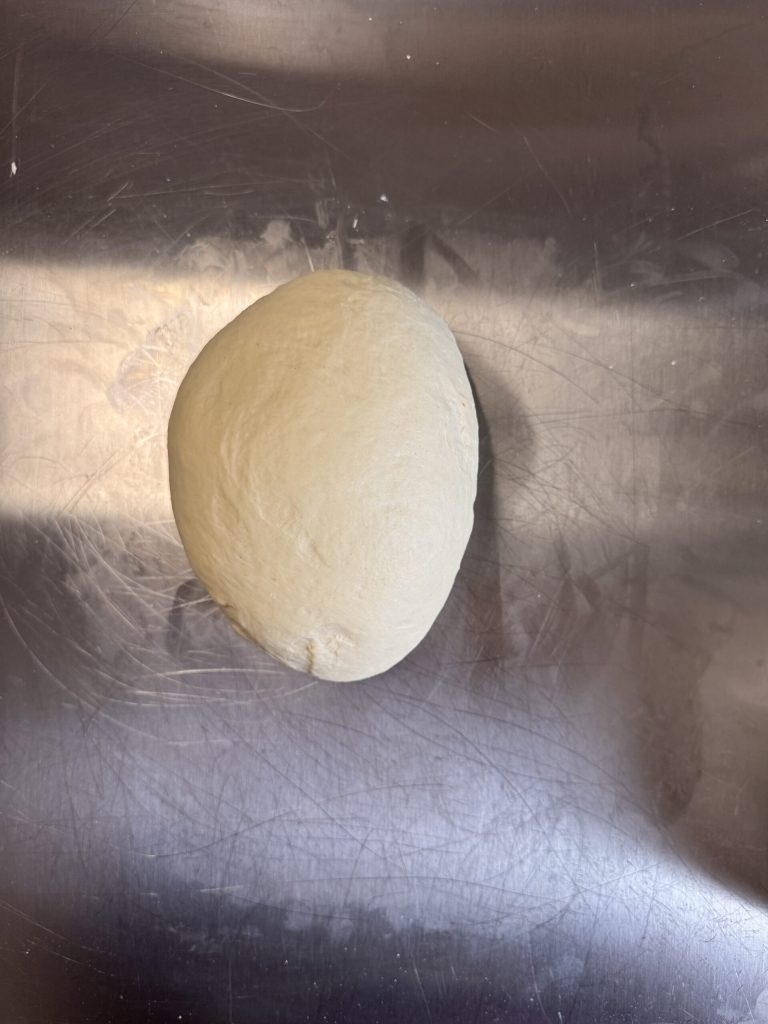Sourdough pizza tongues are my version of the viral recipe that’s been trending everywhere on social media, made without yeast. As every sourdough enthusiast knows, whenever the sourdough starter needs to be refreshed, a portion is discarded. The part most exposed to the air, now dry, is discarded without remorse, but what about the excess that we don’t refresh to prevent the fridge from being taken over by yeast? What to do with the excess? So many things! Especially products that don’t need the powerful push provided by active yeast. This time I used it to replicate this recipe that reminds me of bakery pizzas, with plenty of tomato, thin and crispy. A pizza tongue can be a great idea for a snack, appetizer, or starter. It can be easily made by hand, but for convenience, I used a KitchenAid. If I’ve piqued your interest, let’s get kneading!
For some other recipes based on sourdough excess, here are some examples you can find on my blog:

- Difficulty: Very easy
- Cost: Very economical
- Rest time: 1 Hour
- Preparation time: 20 Minutes
- Portions: 12People
- Cooking methods: Oven, Stovetop
- Cuisine: Italian
- Seasonality: All seasons
Ingredients
- 80 g sourdough starter (excess)
- 350 g all-purpose flour
- 150 g re-milled durum wheat semolina
- 380 ml water
- 2 tbsp extra virgin olive oil
- 15 g fine salt
- 1 tsp sugar
- 800 g tomato puree
- 2 tbsp extra virgin olive oil
- 1 clove fresh garlic
- 1 tsp fine salt
Tools
- 1 Food processor KitchenAid
- 1 High-sided saucepan
- 1 Ladle
- 1 Pastry board
- 1 Dough scraper
- 2 Baking trays
- 1 Parchment paper
- 1 Plastic wrap
- 1 Rolling pin
- 1 Brush
- 1 Spoon
Procedure
I made the pizza tongues with a KitchenAid, but any other food processor or a bowl and a pastry board can be used. The steps remain the same.
Break the sourdough excess into the KitchenAid bowl.

Dissolve it in half the water, adding the sugar. Run the KitchenAid at speed 4/5 for 2 minutes.

After mixing together both flours, pour them into the food processor bowl.

Run the KitchenAid in dough mode to absorb the water. The mixture will look like this, but don’t worry!

Add the remaining water and run the KitchenAid still in dough mode until the water is fully absorbed and the dough is kneaded. It took me about 5 minutes with a pause every two minutes to prevent the dough from overheating.

Add the oil and let it absorb into the dough, still in dough mode.

Finish with the salt and create a smooth and elastic dough.

Transfer to a pastry board, give it two folds for strength, round it and place it under a bowl covered for about an hour.

While the dough rests, it’s convenient to prepare the tomato sauce. Sauté a clove of garlic in a little oil over high flame.

Lower the flame, pour the tomato pulp, add a basil leaf, and season with salt. Cover and let it cook.

After about twenty minutes, the sauce will have thickened. If it’s bland, add more salt; otherwise, turn off the heat and set aside.

Uncover the dough that will have relaxed.

Use a dough scraper to make portions of about 100 g each.

Spread them coarsely with your fingers to relax the gluten mesh.

Roll out the sourdough pizza tongues with the rolling pin and slightly stretch them. Arrange them on a baking tray lined with parchment paper and oiled. Cover with plastic wrap.

After half an hour, stretch them again to lengthen them. The thinner they are, the crispier they will become. Preheat the oven to 428°F.

Pour a couple of tablespoons of the sauce on each pizza tongue and spread it with a kitchen brush. Drizzle with oil.

Bake them for 15 minutes near the bottom of the oven to ensure they cook well underneath. If necessary, turn on the lower heating element only.

After the time is up, take them out of the oven and sprinkle with the remaining tomato sauce. I added some anchovy fillets to some of them. Drizzle with oil, sprinkle with oregano and salt, and bake for another 5/10 minutes at 356°F near the top of the oven.

Sourdough pizza tongues are ready!

Storing Sourdough Pizza Tongues
Sourdough pizza tongues last 3/4 days. They can also be reheated in the oven to make them crispy again. On this base, you can make real pizzas by adding mozzarella and various toppings. If you liked these pizzas, come tell me on Instagram!

FAQ (Questions and Answers)
What can I substitute for the sourdough excess?
These pizza tongues don’t require a lot of leavening, which is why I use the excess. So you can use a packet of instant yeast for savory items…or nothing!
How can I make them as crispy as possible?
By increasing the amount of oil in the baking tray and also sprinkling it with some semolina.

